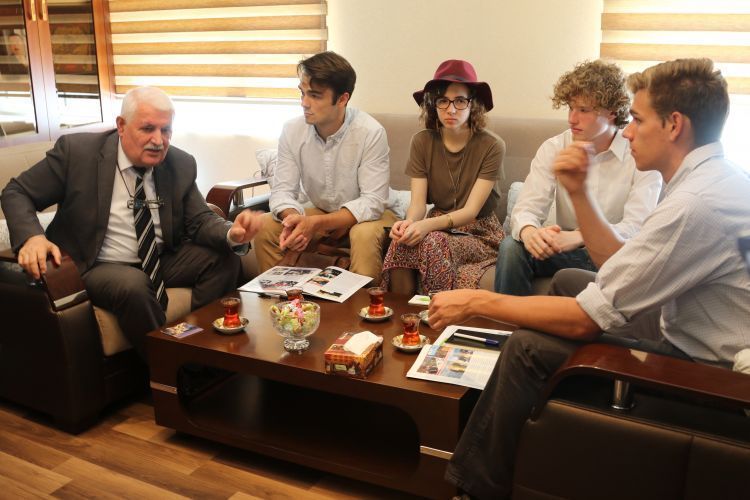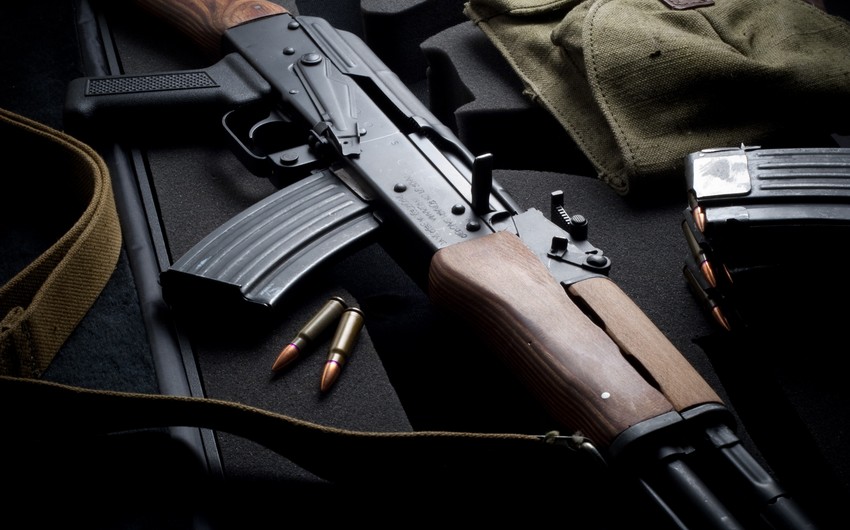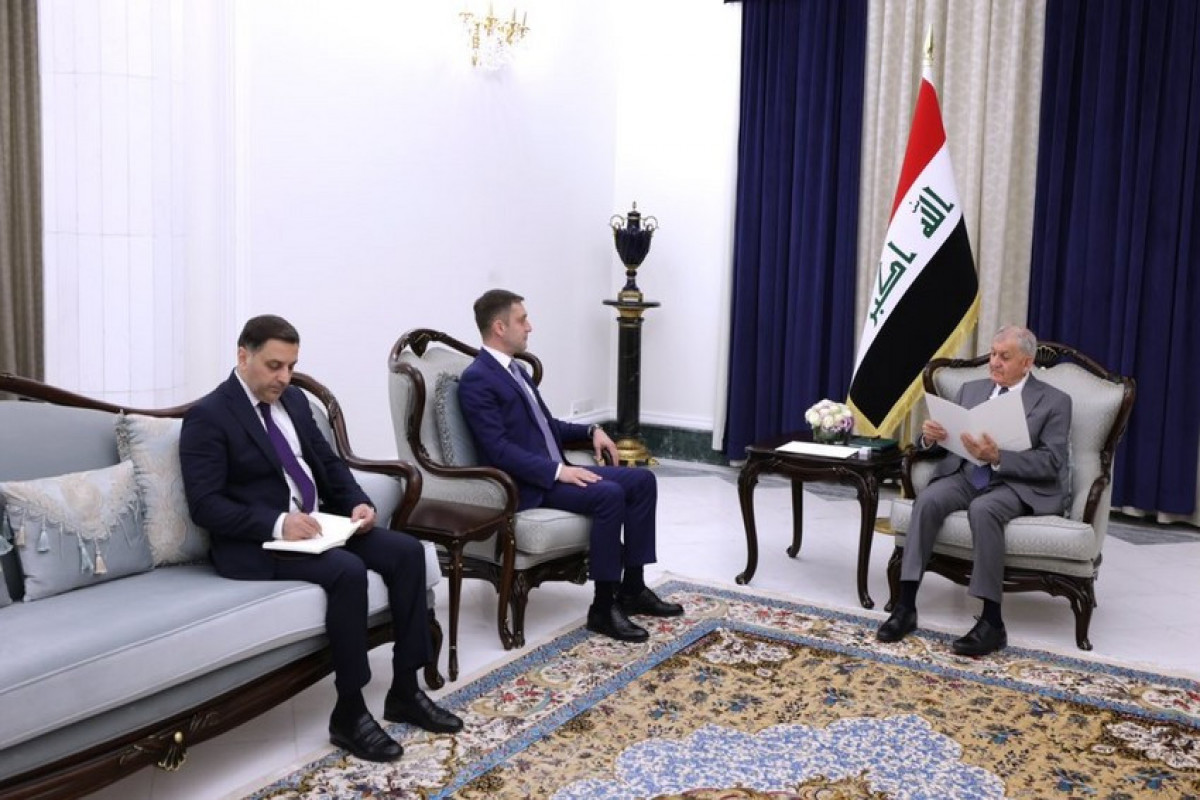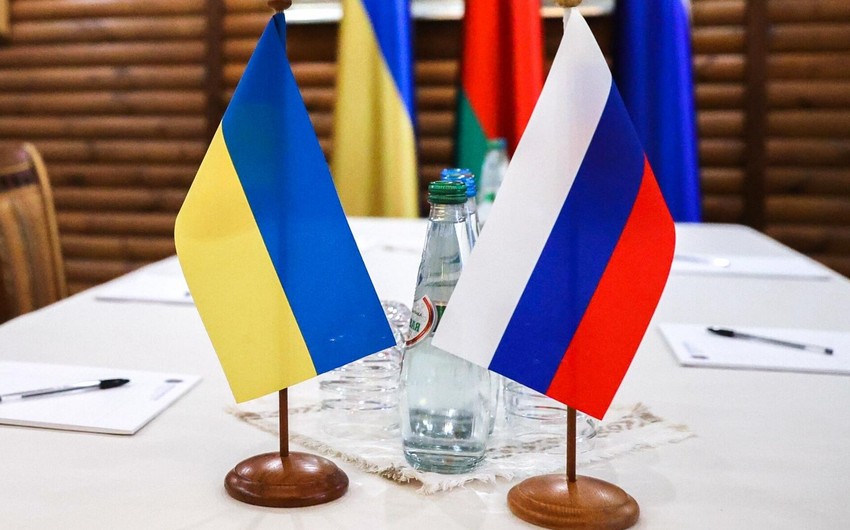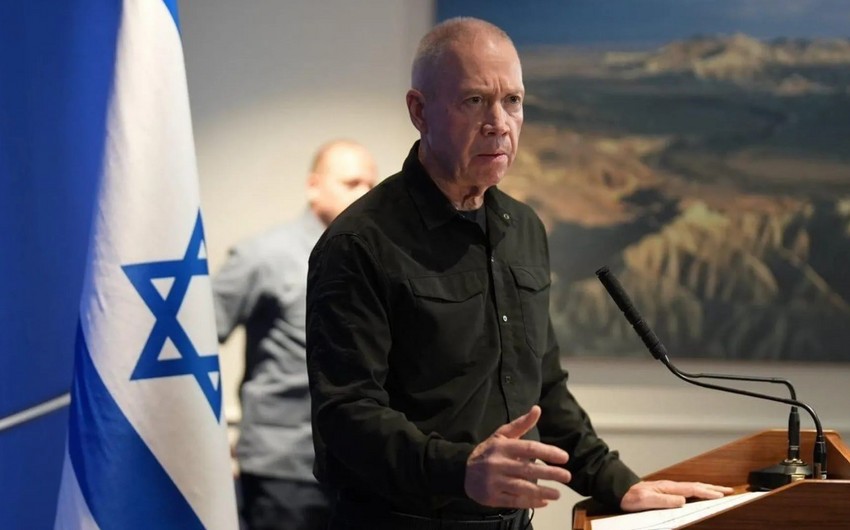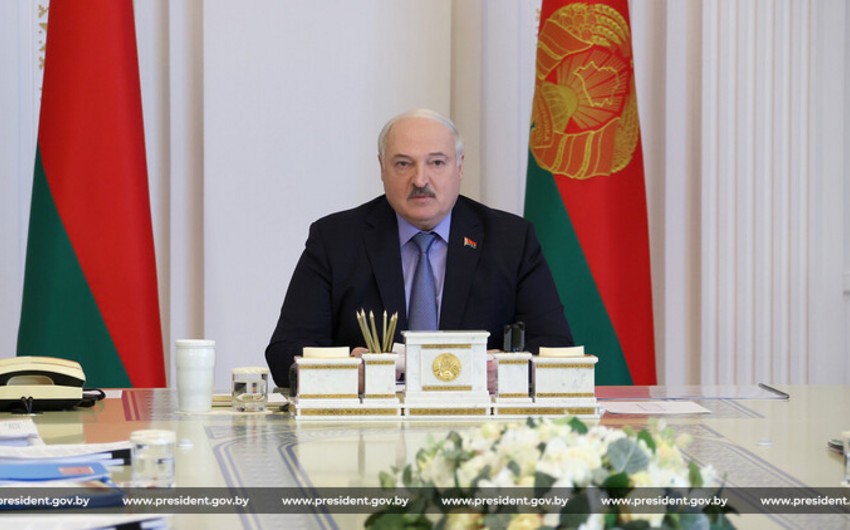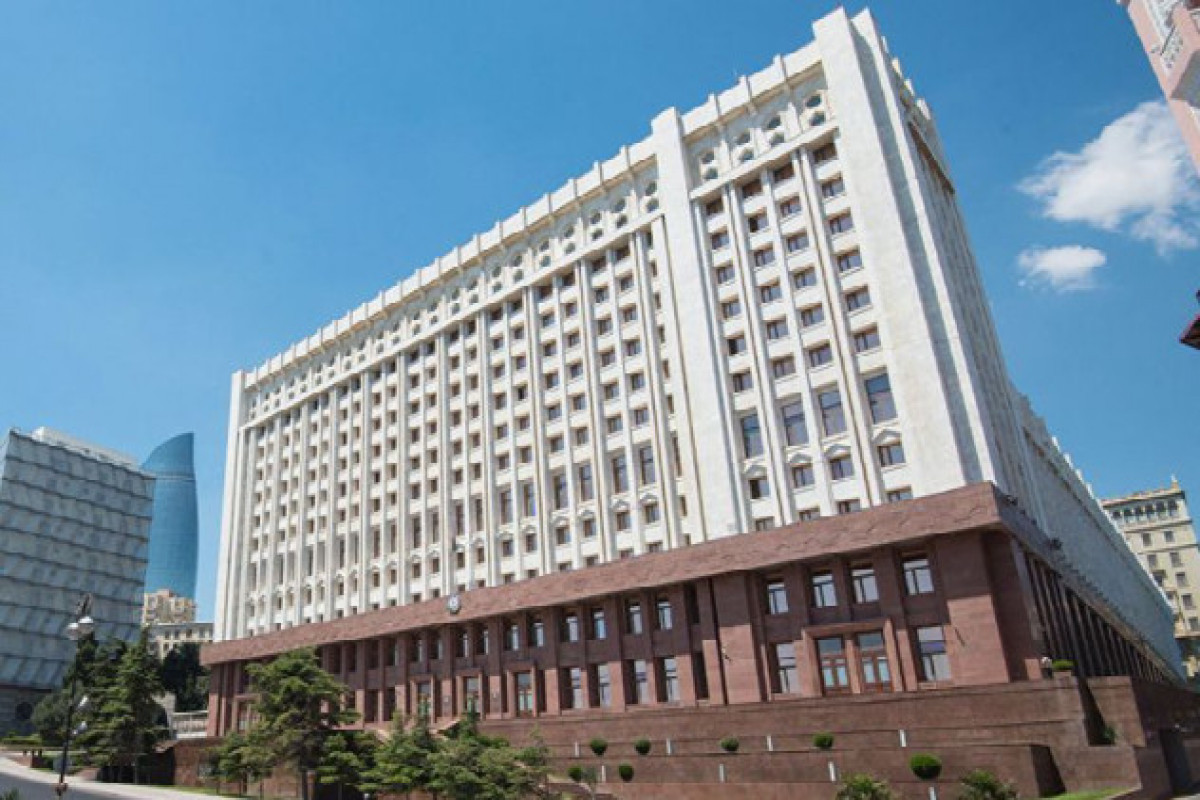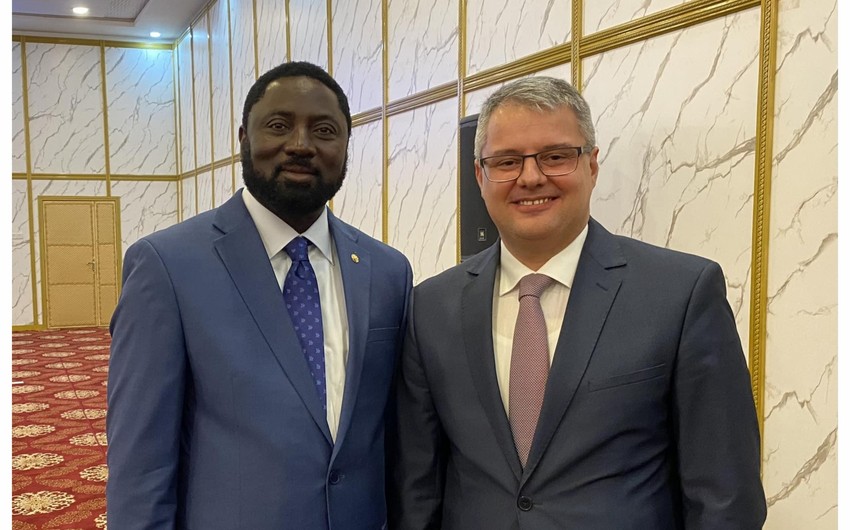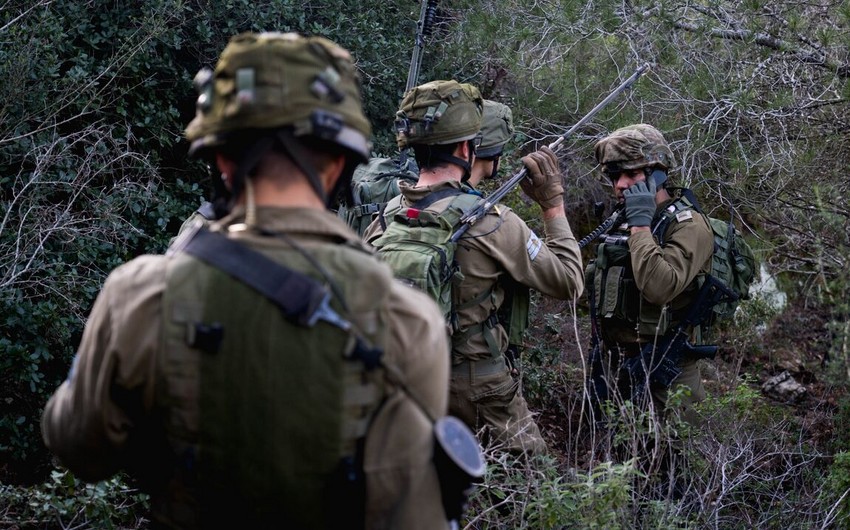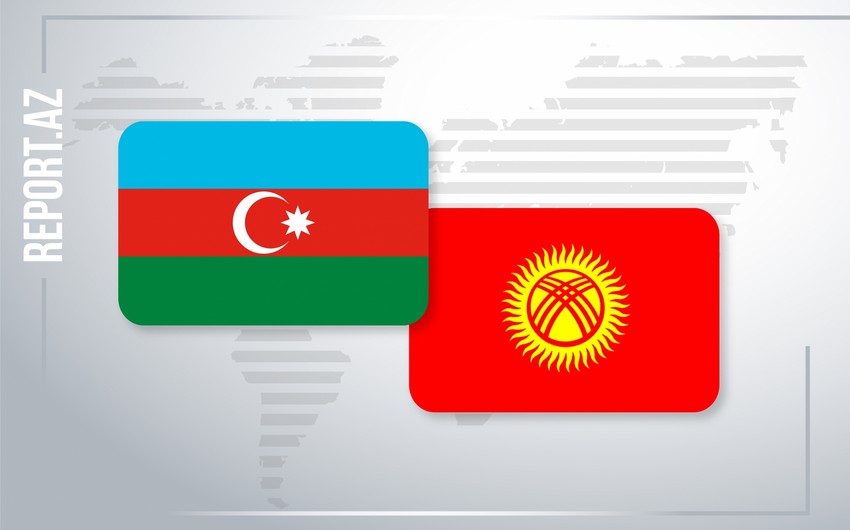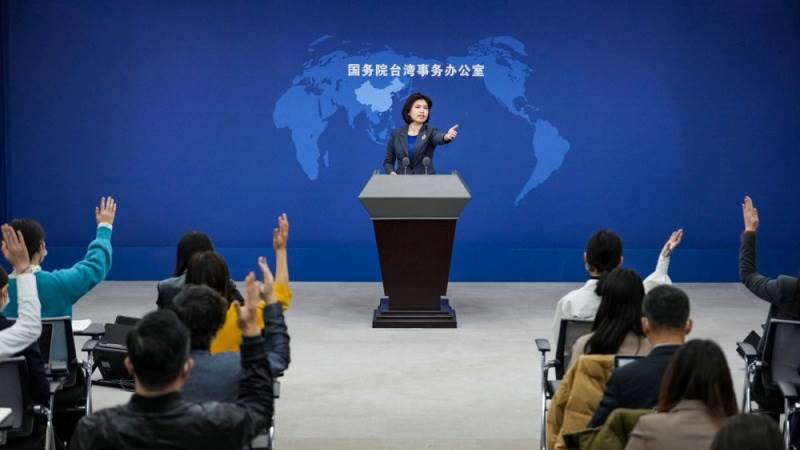James Mackes and Richie Hennessey, interns from US travelled through frontline regions within the project organized by International Eurasia Press Fund. They noted all what they saw during the trip and Eurasia Diary shares their thoughts published on their blog.
The final destination of our trip to west Azerbaijan was to a Vocational Training Center, created by IEPF. This center was created with financial support provided by the U.S. DOS. As we were given a tour of the building, were told that the school teachers classes on Agriculture, computer, sewing, and carpet weaving (we were shown some of the carpets they made). They also provide information about judicial services to help IDP women to prepare and send documents to the government. Lastly the school provides free internet to any IDPs in the region. Different age group students come to the office.
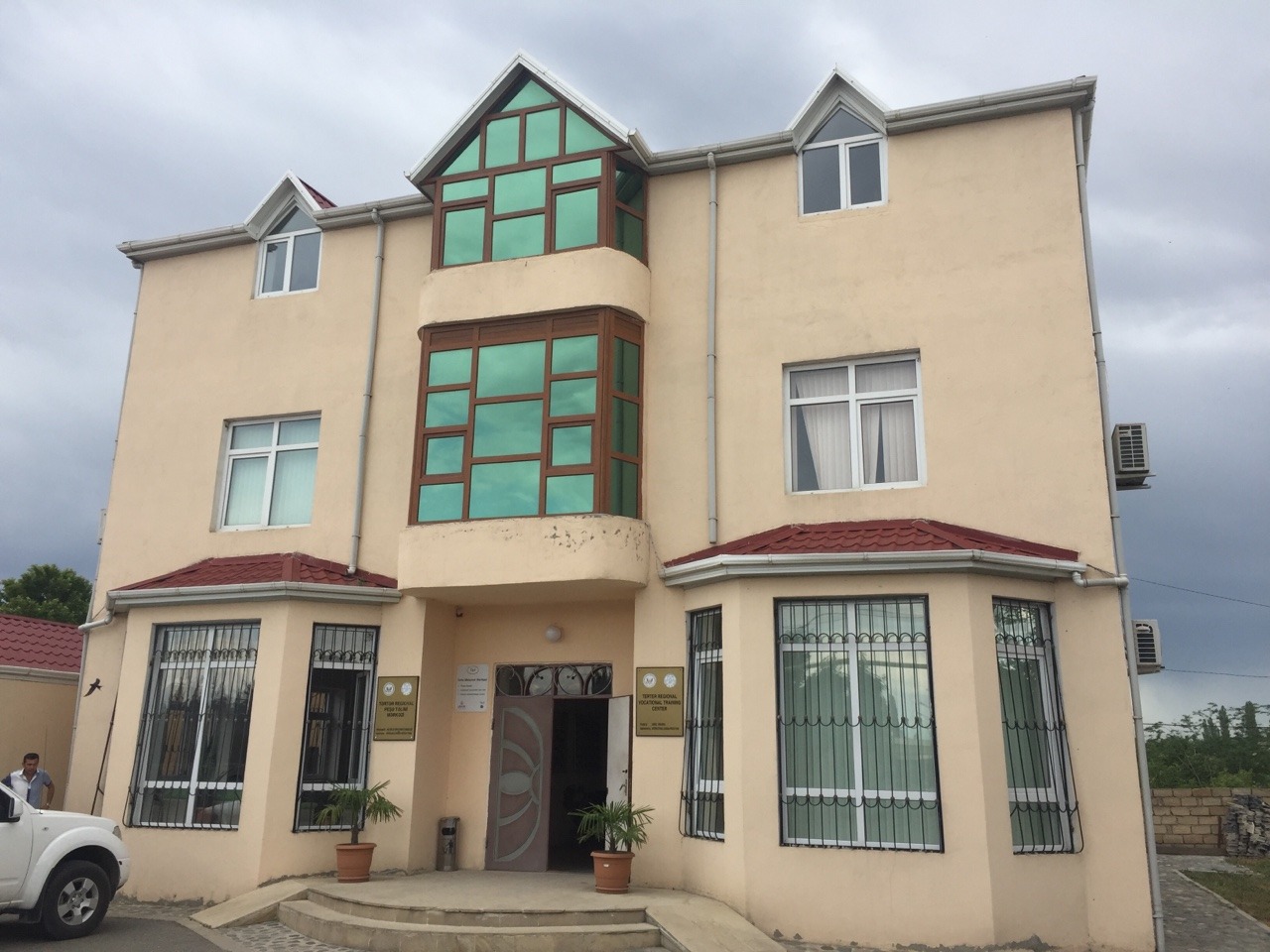
As we were given the tour, I wondered why they seemed so eager to tell us about their work, history and struggle–over the past two days. Much stems from their tradition to be hospitable, yet that did not fully capture it. The conclusion that I came to is because they are proud–proud of their hard work and their family’s before. Proud of their people–because they have struggled through Soviet occupation and territorial conflicts. Proud of their people because they love their people. And all this mounts to their pride to be an Azerbaijani. They love their country so they wish others to see why.

One of the most impactful conversations of the day was with Mr. Umud about the media coverage, or lack there of, of the conflict. I had watched several BBC videos the night before that were produced about the front line, this Spring. I asked Mr. Umud if any of the major international news sources had covered the conflict. He replied that both CNN and BBC had done a few reports. He said he was grateful for the exposure yet regretted the biases of the casters. He feared that there are few journalists looking at this objectively. Because of the politicalism of Western countries trying to not anger Russia–who according to most Azerbajainis, assists the Armenian army.
Then he turned toward me saying (through a translator), “this is why it is very useful that you are here, a common civilian. To get to bottom of it, to find the objective truth.”
I am moved by this–the duty of a good civilian is to find the objective truth of the conflicts within the society. All too often we banter around the truth, with little regard for it.
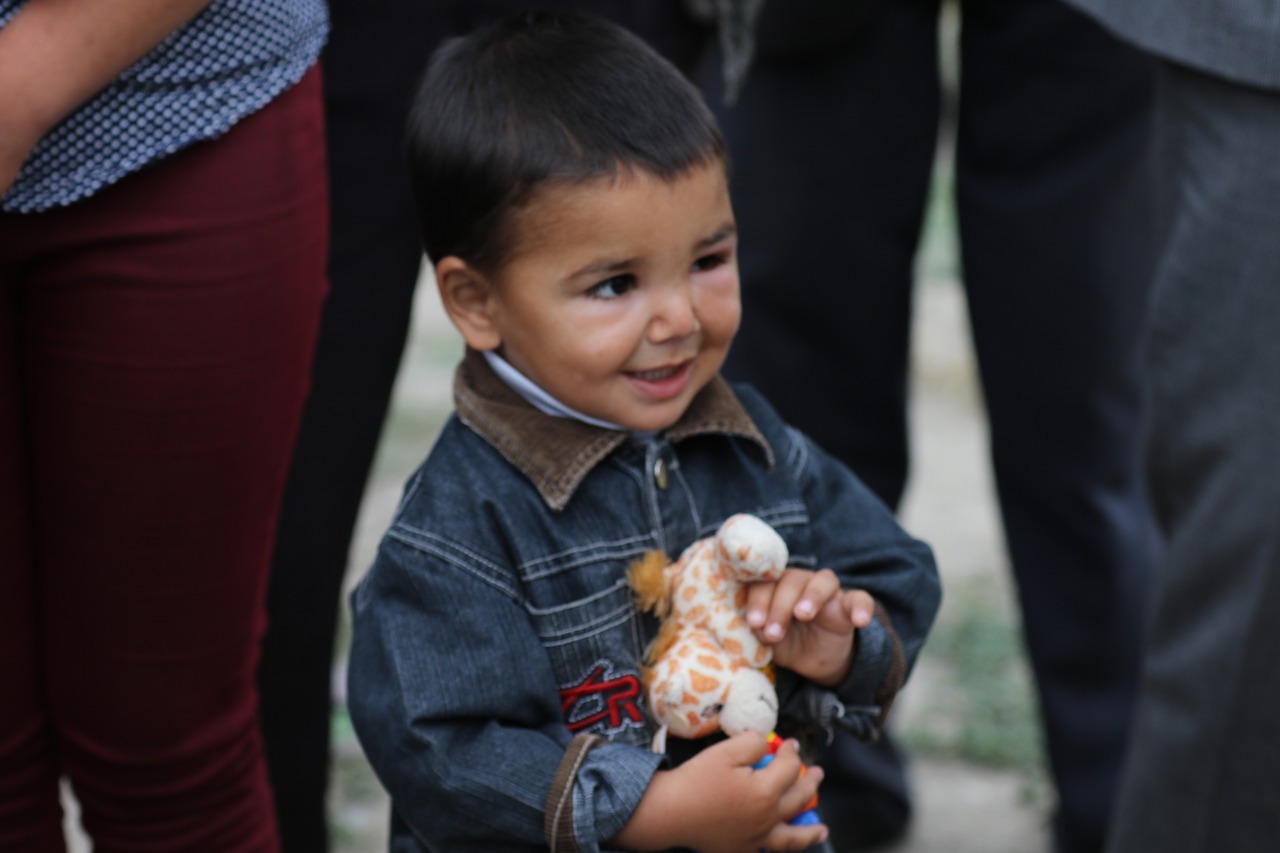
Life on the Frontline
Today is International Children’s Day, so Umud Muallim, the director of the NGO, took Richie and I on a trip to west Azerbaijan to deliver presents to children living on frontline of the Karabagh conflict. We were within 0.4 miles of enemy territory. It didn’t feel real, but little things would remind me that it was real: the rain on my face, the kids smiling, and the moms small talking.
Life happens even here. It’s a scary life where snipers can shoot and mines can explode at any moment. It’s hard when enemies control the main supply of water for farming and when sicknesses like tuberculosis spread through the small community. But life happens here, and it’s worth protecting.
Just 60 Azerbaijani families linger here in the village of Hasangaya. The others have fled. We asked them why they’ve stayed this long, and they said, “We don’t want to give up our land or our homes.” It takes bravery to live in a place like this, but that bravery isn’t what struck me most.
What struck me is when I saw the sullen faces of the kids crack with joy as they opened up there presents. I know it was real because I saw them open the presents away from the crowd and the cameras, when they forgot that anyone was watching. Similarly, it took me back when I saw the moms standing from a distance as they watched their kids play with their new toys. They weren’t doing anything for show. They were watching their kids play, smiling, and small talking. They were doing what moms do while their kids were doing what kids do.
These people are brave, but it seems like they don’t need to how brave they must be all the time. And it’s these times that I watched them forget that I will remember for a long time. In these moments, life seemed ordinary and effortless for them. They couldn’t help but live even in a place where living is tough.
I think life is resilient. It squeezes into places that belong to death, and it grows, kind of like a dandelion between sidewalk slabs. It’s scary and tough to occupy places belong to death. But even death cannot take away little moments of effortless, ordinary life. Even in Hasangaya, kids can play, and moms can watch.
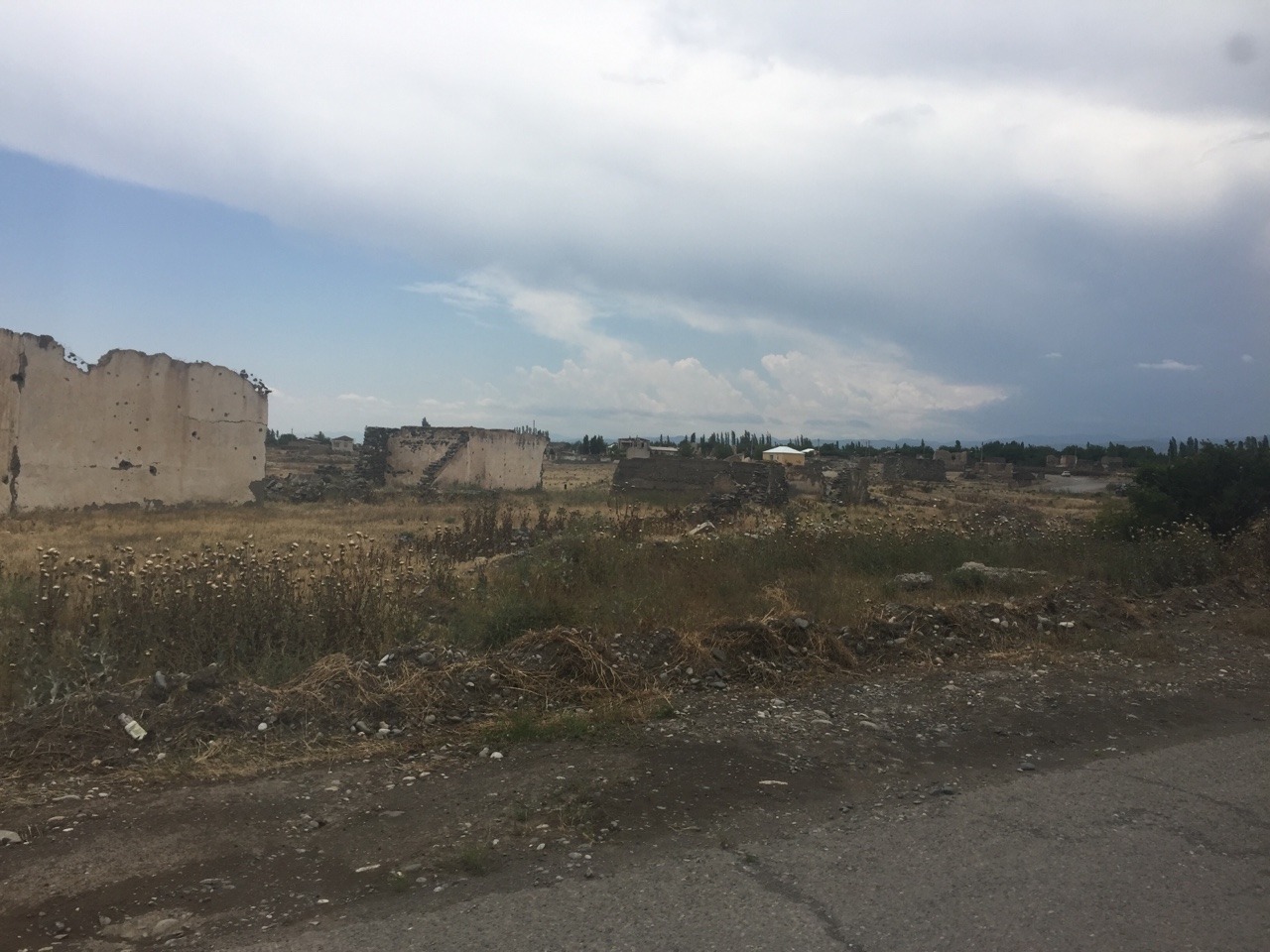
The picture displayed many homes in Shikharkh that were destroyed in 1993 in the war. The government, partnering with humanitarian organizations, has built new homes for IDPs. Before this option, many IDPs lived in the basements of the ruined walls. The wreckage reminds the country that there is still much work to do.

The second village that we visited was in Hasangaya, within a half a kilometer from Armenian occupied territory. The setting was much smaller then the first. Mr. Umud gave a speech and we handed out the shoeboxes.
We noticed that the living conditions were very poor. We asked Umud’s son why they do not simply move away from the border to where the Government had built homes for the IDPs, he replied, “the do not want to give up their land”.
To give you a clearer image of the fear the people of Hasangaya were living in. James and I asked if we could go take pictures of the neutral area between the two armies from a overlook. They said we could so we walked over. As we started snapping away at the homes that are being lived in by Armenian people in the valley, the Armenian occupied mountains, and the dark clouds bringing rain, a man from the village told us that we should come back and duck because there are snipers. He told us it was “a one percent chance, but we do not want to take it”.
Yesterday, James and I were generously given the opportunity by Mr. Umud Mirzayev to see the war affected children in Azerbaijan, for International Children’s Day. The first village that we visited was Shikharkh. Mr. Umud and several others with us gave speeches to the children–charging them to study hard, hope, and strive for peace. After the speeches, we handed out one hundred Salvation Army shoeboxes, from their Operation Christmas Child. The kids were very grateful for the small gifts, the photo above shows a girl receiving her gift and kissing the gifter on the cheek (a common show of friendly affection in Azerbaijan).
The children and families are Internally Displaced People from the conflict. Being close to the occupied territories by Armenia, they face constant fear. The conflict is categorized as a “cold conflict”, although there are shootings and bombings nearly every day between the two. I noticed the eyes of the child. Eyes that showed the visible pressure of daily fear. The children were joyful, yet the knowledge that their life could be in danger any day is too heavy for anyone to bear.
I will leave you with a quote from Mr. Umud’s son about the children of Shikharkh: “they do not know what tomorrow will bring”.
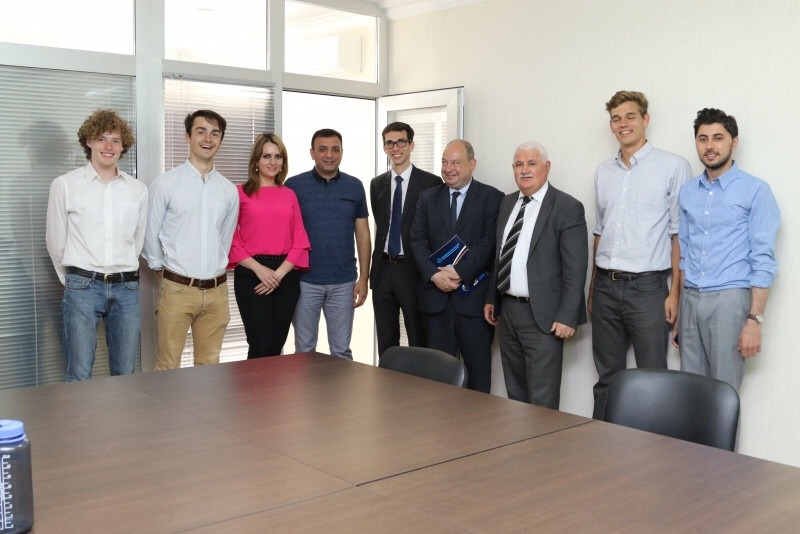
One of the companies that we learned about from our meeting with Umud, was Eurasia Credit. This organization is a non-banking credit company. It was established by International Eurasia Press Fund (IEPF) in 2007. The mission of the business is to provide credit to Azerbaijani small businesses in war affected regions. From the numbers we were given, the clients that they currently assist are 53% local, 43% IDPs, and 4% mine victims.
Like many other Microcredit institutions, they also provide training for their clients, to teach them how to budget and manage their business. I asked the director (pictured in the blue collard shirt–middle left) the types of businesses that are common for these people in the regions. He replied that they vary greatly, including agriculture, beauty salons, fruit stands, bakery shops, and artisans. Naturally, I was very excited about this business and I am thrilled to learn more about it in the coming days.
Pictured above to my left: Umud Mirzayev, Belgium ambassador with his Deputy, two of IEPF’s staff members (a third–pictured to my right), James, and Zachary
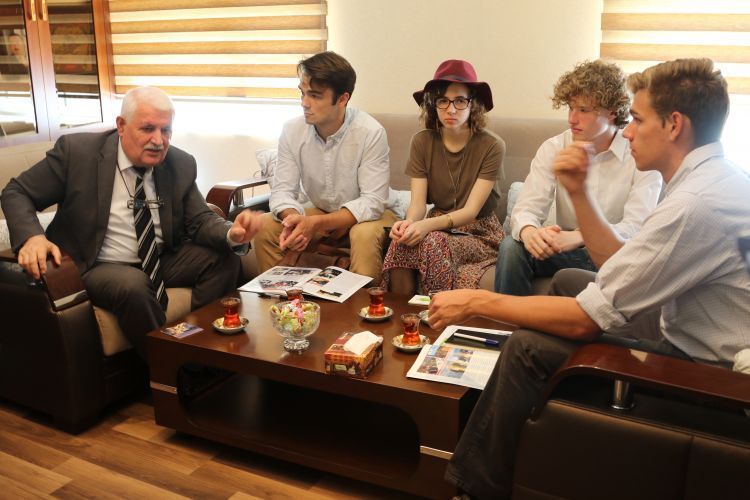
Stumbling into a Story
We visited the Alley of Martyrs today. I enjoyed the peace of it as I sat by the eternal flame (a monument in the Alley of Martyrs), and I wrote. The sun began to set, and it cast a pale purple light over the city. I have wanted to see the sun set at least once on this trip, and I decided I’d try to catch it. The problem is that the West side of Baku sits on a tall slope, which blocks the sun set. The eternal flame is on that slope, so I climbed the steps as high as I could to see the sun. After a while I got to a barbed wire fence with a path that ran along the outside. I had no idea where I was so I started down the path. I found some wildflowers, and it was a good time. I caught a tiny sliver of the sun set—the same purple light over the city concentrated in a pool around the sun. It was beautiful. Then I saw some security cameras, and I realized I shouldn’t be there. So I turned around.
As I turned around, I thought to myself, “I kind of wish I knew what was behind this fence. I sort of wish I got stopped by someone. I wish a story happened. I want an adventure, and I feel like there is potential here for one.” Then I thought how I shouldn’t force a story. All I could do was put myself in a place with potential for one. I think that it’s different than looking for trouble because I really didn’t want to get in trouble. I just wanted something to happen.
I got back to the head of the path when a guard poked his head . I said, “Salam, men americaliam,” which means I am an American man. That’s about all I know in Azeri, and I was using it as a get-out-of-jail free card. I looked like an idiot as I said it too because I said it while trying to keep myself from laughing. I couldn’t believe the irony and thought “God, really?” I told the guard I was trying to get back to the Alley of Martyrs. He knew I wasn’t a threat when he saw the pink wildflowers in my hand. So he laughed and shook his head—which made me feel rightfully dumb and also childish. Then he pointed me in the opposite direction of the Alley of Martyrs. I knew it wasn’t the right way, but I decided to be consistent with the character I looked like (dumb American tourist), and I followed the path he pointed towards.
I got to a more private and more rundown area of the cemetery. The sun had set below the hill now, and I was under tall trees. I passed a three old men drinking tea, snacking on Alcha (sour plums), and playing backgammon. (This is a common sight in Azerbaijan.) And I saw plaque in Azeri on the building with the barbed wire, so I took a picture to figure out what it said later. Then one of the old men said, “Salam.” It was obvious I was a tourist, so I decided to surprise them with some more Azeri. I said, “Salam, sen necessan?” (Hello, how are you?) I knew it wasn’t impressive, but it was all I had. And it actually impressed them. They asked me where I was from, and I said my go-to phrase, “Men Americaliam.” The old man was clapping at this point. He invited me to sit with them and drink çay. I have learned to never turn down a stranger’s invitation to çay.
So we talked a little bit, and he had very good English. His name was Umud, and he said that he was the director of this place. I asked what it was, and I didn’t understand what he said, and I didn’t think to ask again. Eventually, he invited me and any friends I had with me to his office. So Richie, me, and a new intern named Emma went inside.
It turns out that Umud is the director of a big NGO called the International Eurasia Press Fund. This is an international NGO in General Consultative status with UN ECOSOC, and they focus on peace-making in unstable political climates, such as the Karabagh conflict.
We didn’t spend much time there that night, but Umud invited us back to have tea at 11 the next day (at 12 he was meeting the Belgian ambassador). At tea, Richie and I learned a lot and you’ll hear more about our favorite project by IEFP in the next couple days.
It was a crazy time, and we didn’t do anything to earn it. All I said was “men Americaliam,” and listened. The Lord did the rest. He has overflowed our cups again. He is good, and it’s crazy to see him work this month—in both big and small ways.
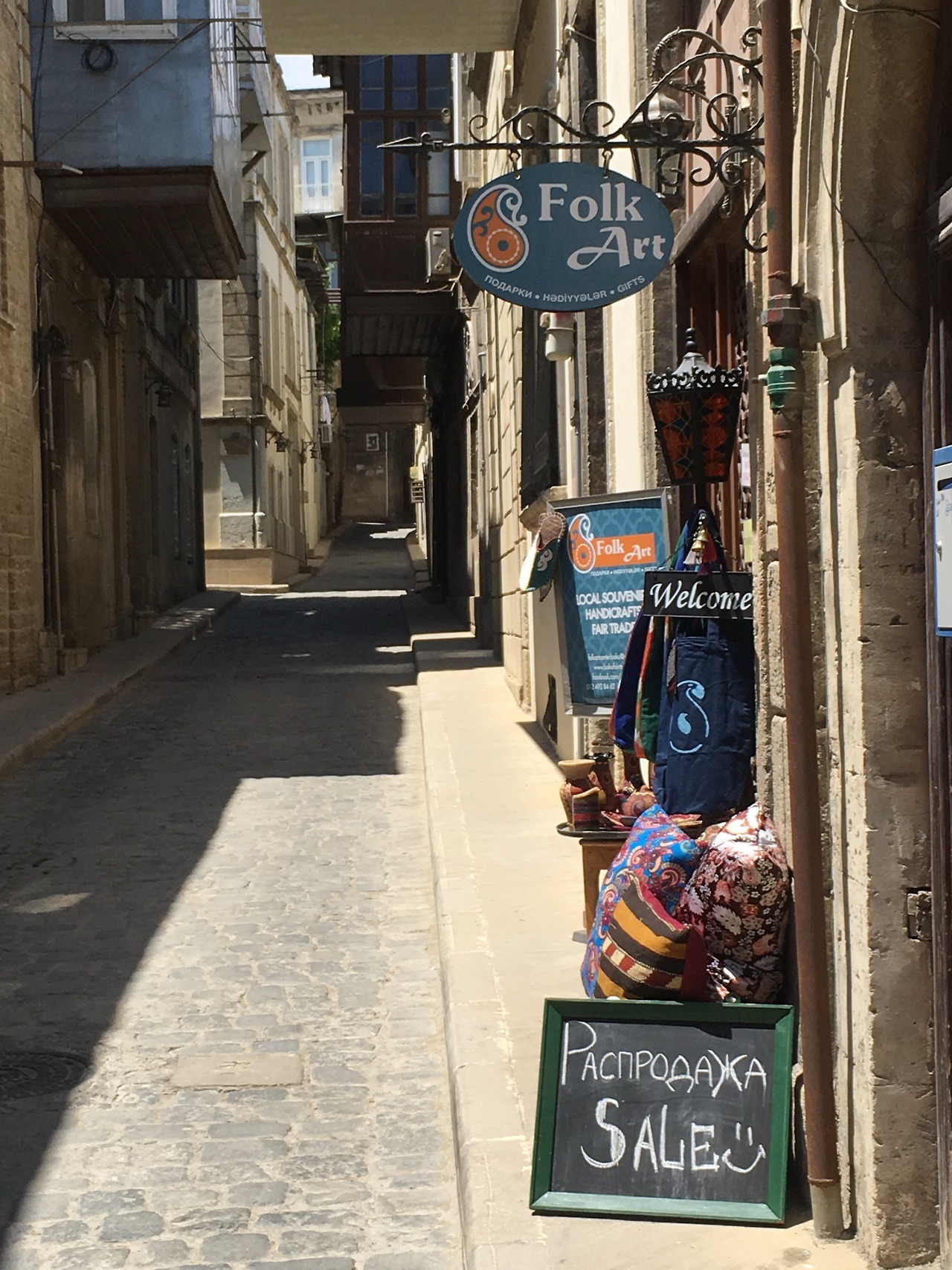
A Life Giving Business
Sometimes it’s difficult to see beauty in business. It’s much easier to see the greed. It’s easy to blame faceless corporations like McDonalds or Wal Mart in a blog, and say “That’s the problem with the world.” We’re not interested in easy though. And we’re not interested in caricatures. Anyone can write about the ugliness in business. I want to try to write about something else.
I think business can be beautiful. A business is meant to meet needs. Entrepreneurs see a need or a problem, and they say, “I think I could help.” Their product could be a cup of coffee or a car. The service could be collecting trash or giving a manicure. Entrepreneurs spend creativity and sweat on a product or a service to meet that need. Then they put it on the market. If the product or service works, people will buy it. And their life gets a little nicer because of that good cup of coffee or because that pile of trash in their front yard was disposed of.
Customers pay a business because the business provides a service for them. Businesses help customers because the customer provides money to the business owner and all of their employees. It’s a symbiotic relationship–like a clownfish and its anemone.
Business are meant to give life, not leech life out of a community. Greedy monopolies and exploitative business leech. But not all businesses have to. Richie and I have gotten the chance to work for a life-giving business here in Azerbaijan called Folk Art. It’s a retail business in the Old City that sells handmade Azerbaijani products on consignment from local artists. In short, it acts as a middle man between artists from all over Azerbaijan to tourists wandering the streets of the Old City looking for gifts to bring home.
It’s been refreshing to work for a business that strives to serve rather than take away. And Folk Art is designed to give to both its customers and its producers. As a tourist in a new country, I want to buy gifts for my friends and family. And I am not interested in factory-made plastic knick-knacks that say “I love Baku.” It’s fine if you are, but I am interested in genuine, local art. The problem is that tourists can’t tell what’s genuinely Azerbaijani and what’s “made in China.” Many retail stores sell tourists the factory-made stuff at a nicer profit than the real stuff.
Folk Art sells the real stuff because that’s what customers are looking for, but primarily because it serves local artisans. It provides business to poor producers in the regions outside of Baku especially, which enables them to provide for their families.
Folk Art is the real deal, They’re doing their best to give life and not leech it out of a community for a profit. I am grateful to see a picture of a healthy business, and I am going to do my best to make it even healthier as I work for it this month.

The last day of our brief trip to the regions, James, Mexman, and I walked along this river (Cay in Azeri) toward the Russian mountains. The walk was very pleasant, as we passed many beautiful wild flowers and the breathtaking Caucus mountains were before us. Everything surrounding the royal peaks seemed to assemble in place around them.

James and I were able to go on a two day excursion to Kiçe and Sheki, touring various historic sites. This is a picture of an first century Albanian church, started by a disciple of the Apostle Thomas. The building was used for Astrianism, a pagan religion, prior to the bringing of the Gospel to the region. The building is now used simply as a historic holy site.
Around and in the building, there are several graves, with glass ceilings, where you can the see the bones of different Albanians. Our tour guide said that the people were blonde haired with blue eyes and very tall (from the bones I would guess around 7 feet).
The location was picturesque. There were various rose bushes scattered around the church. Looking beyond the ancient building, you can see the kingly snow capped mountains in Russia, making everything in sight all the more beautiful.

This is Hegiget in his garden. His name means “truth,” and he shared his mint with us.
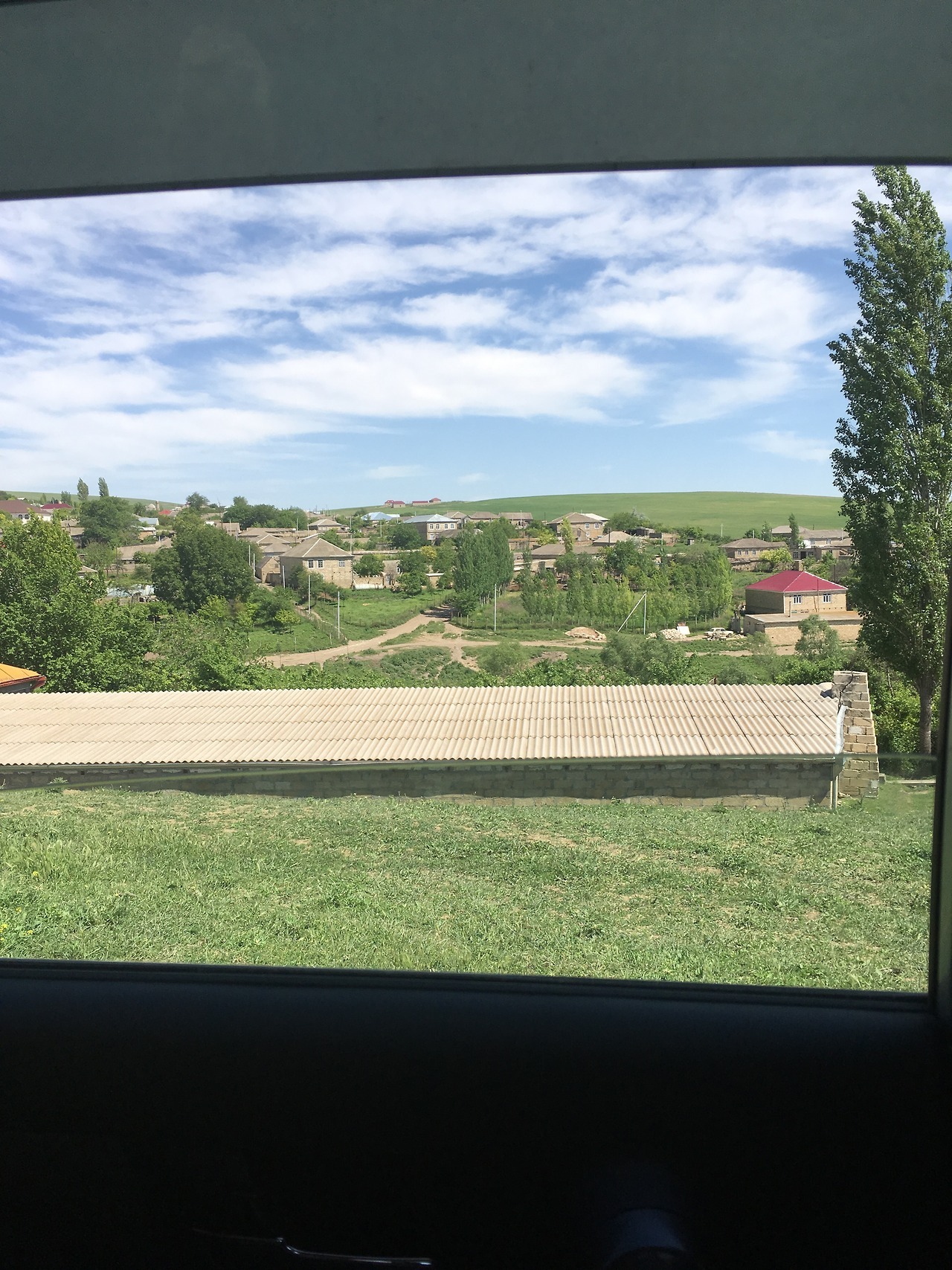
Chilov: How Could a Place Contain a Life?
We left our apartment this morning for a village in central Azerbaijan called Chilov. Our mission was to interview local carpet weavers about the process of making flat-weave (Kilim) carpets. We didn’t know who they were or how to find them. So our team of five (including a translator) showed up at the perimeter of the town and started asking people on the street where we could find carpets.
We were able to sit down and drink çay with one family in particular. The man of the house was an Imam. His name was Hegiget, meaning “truth” in arabic. He explained that he is both an Imam and a former teacher of Russian literature and language. He is 80 years old, and he spent fifty years teaching. Now he is retired. He has a bushy beard, crinkly smile, and a cane to help him walk.
Hegiget has lived in Chilov his whole life. It took me back when he told me that. He has lived in this small village in the farm country of Azerbaijan for eighty years.
We interviewed a couple more weavers and headed home. As I looked back on the village, shrinking in the rear window, I asked Aygun (our guide and translator) if she thought these people visited Baku often or if they left Chilov at all for that matter. She said, “Probably not. Maybe their sons will go to Baku. Not them.” Baku is the capital of Azerbaijan, and it’s only an hour and a half away.
Hegiget and his family are happy. They have enjoyed fruit and vegetables from their healthy garden, he has taught at the local school, and his wife, Nezaret sells the carpets that she weaves, and Nana (Hegiget’s mother) lives with them and helps with the carpets. They’re living life, and they seem pretty happy with it. Of course sometimes they’re not. Of course sometimes Hegiget probably wanted to go to Baku, especially when he was young. And Nezaret said herself that it would be nice if she had more customers buying her carpets. In short, I am not writing another travel blog about how I wish I could be content with simplicity like these poor people are. Their happiness isn’t my point.
I am writing about their happiness, frustration, laughter, sickness, and everything else. I am talking about one complete human life. I am talking about eighty years of a life filled with mountains, school, çay, love, worship, games, and gardens.
I guess I wonder how I can look at a place less than five miles long and know that this place contains memories of an entire human life. And not just one but hundreds throughout generations.
This village is beautiful. It’s name is Chilov, and a man named Hegiget lives here.
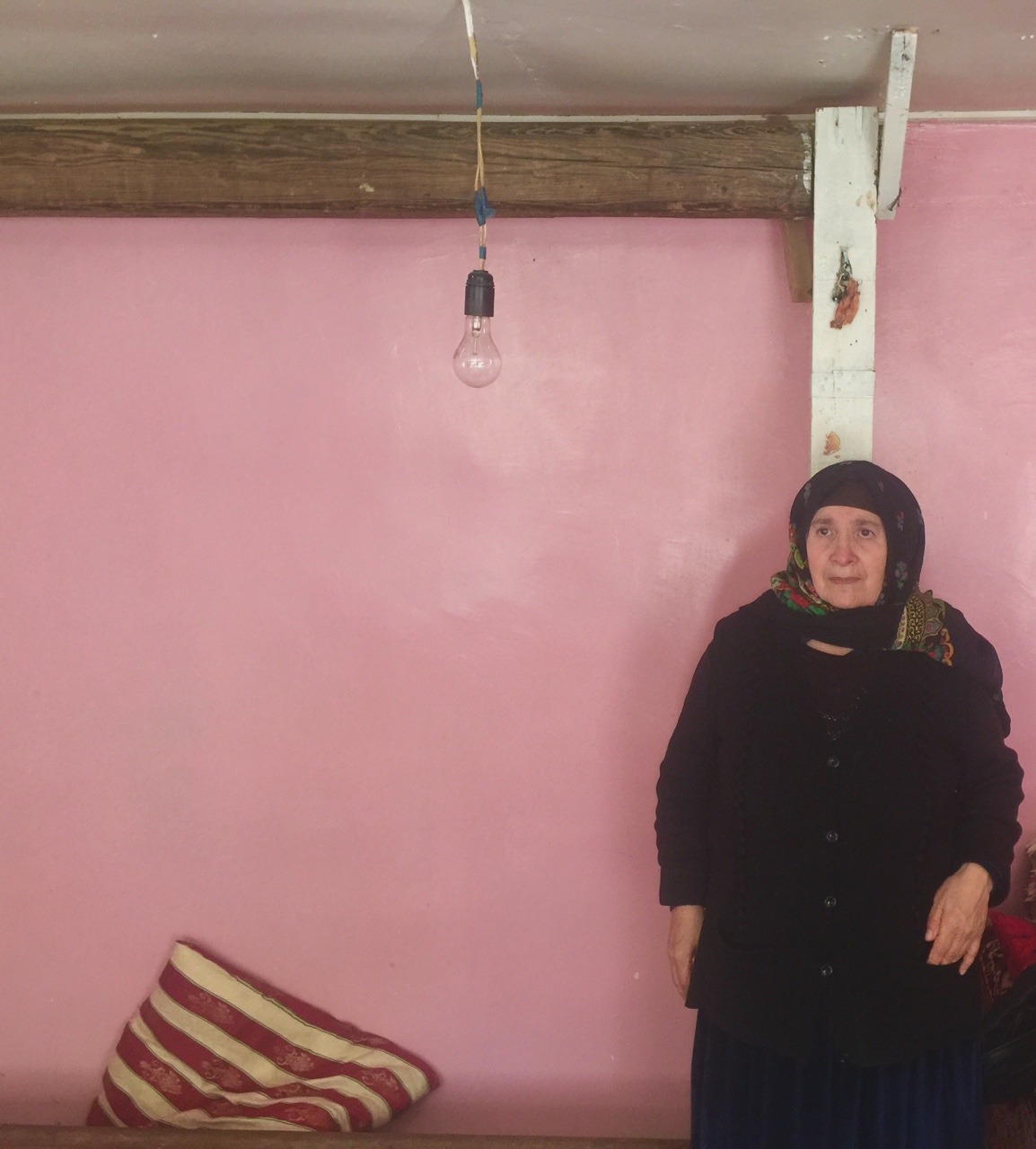
The final weaver that we met was Semae, pictured in front of her weaver’s machine. She was a very sweet energetic lady that talked us into buying some of her many carpets products (we purchased a few bags). Semae and her daughter are the carpet weavers of the family. She showed us a massive carpet that she had made, telling us that it would take about 6 months to make one the same size if she was working by herself (2 to 3 months with help).
When we asked if we could take her picture she laughed and said that no men want her picture any more. She then took off her glasses and put on a head scarf for the photo.

The woman pictured is Nazarem. In meeting her and seeing her carpets I noticed that she was a very reserved yet confident lady. She told us that she works on her carpet projects whenever she has free time. Recalling her daily routine of weaving in the morning then taking a break for house work and cooking only to resume again, when she completed her work. We asked how long she thought it would take to finish this carpet and she said it would be done in about three months (she started in January). From her own money, she buys the wool and the dye.
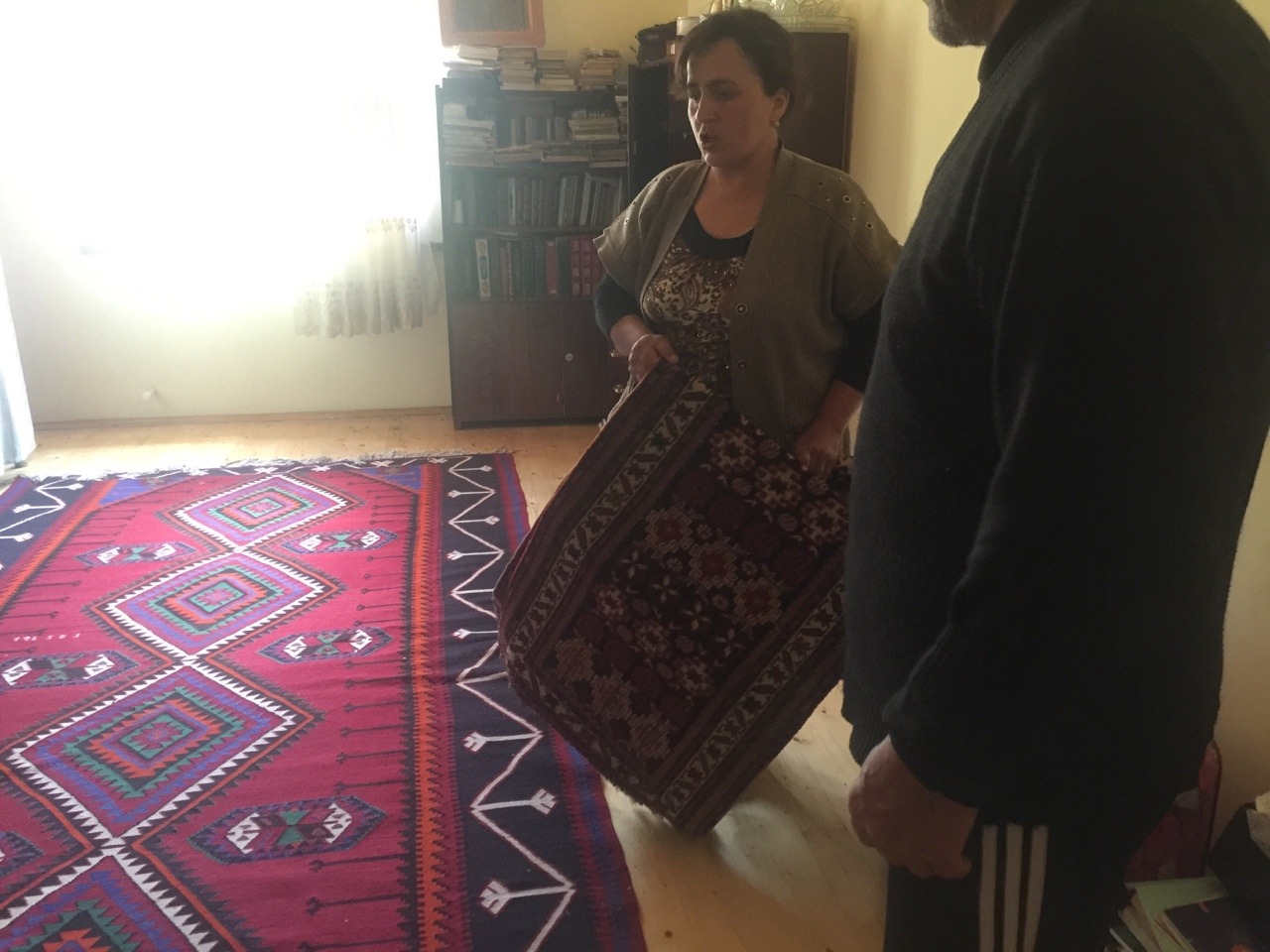
Meet Nezara. Of the households that we visited, her’s was the most full of skillfully woven carpets. Although Nezara and her mother in law were the only weavers in the family, they had been fairly successful selling to distributors in Baku.
Her family was very friendly and hospitable as they brought in tea, candy, and strawberry jam for us after they showed us their carpets. I was at first skeptical, assuming that they were trying to manipulate us into buying from their stock. However, I quickly noticed that they had no expectations for us besides friendly conversation.

Above is the first carpet weaver that we met. She is thirteen years old and has been helping her mother weave since she was eight years old. She is holding up a piece that she made herself. Remarkably, this was the one family we met who did not use a weavers machine, they weaved all by hand. Although not smiling in this picture, she was very joyfully engaged in listening to her father explain the production process to us.
(Her father gave us permission to take a picture of her with her carpet)
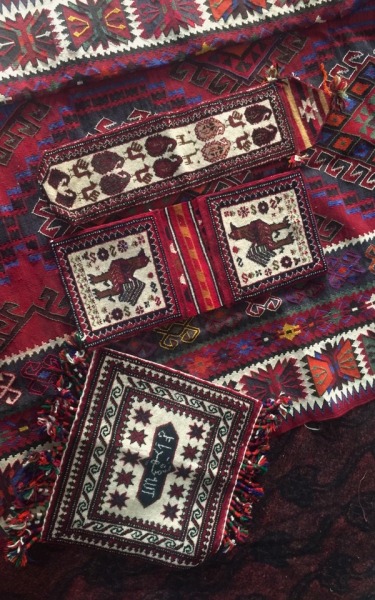
Today James and I and a group of 3 Azeri’s that work for Folk Art went to the Çilov to learn about the production and costs of carpets. Entering the small village about an hour and a half north of Baku, we were struck by the peaceful landscape of grassy plains and mountains. The homes were practical and quant and each yard seemed to have a garden full of luscious vegetables. We met with several families where the women weave carpet. It was very common for this to be the case in households that we passed. The men explained the process of shearing the wool in the fall and then dyeing the wool with natural dyes (such as onions, flowers, and pomegranates). The wool was then spun, normally by two women, into yarn. After this, the women could begin weaving the carpet. Most used a weaver’s “machine” (a loom made of wood that held vertical ropes and supported the carpet) although we met a family who weaved it all by hand. We asked them how long the entire production took. For the large carpets, their answers ranged from six months to a year. For the smaller carpets the answers ranged between two to six months. It depended on whether they have help from a family member and also how often they’re able to work. The craft is passed down from generation to generation. The women that we met learned the art from their mother at a very young age. The carpets that were most interesting to me were the ones that showed a picture on them. Their are many common themes on traditional Azerbaijan carpets. Some feature Islamic stories or sayings (in the picture to the left there is one that says “Allah”). Some picture scenes from their heritage’s folklore. Many have dragons (s shape that can be seen in the picture on the left), a tree of life, and a traditional crest. The Azerbaijani carpets are a beautiful expression of their nation’s tradition and values, and is a craft worth preserving.
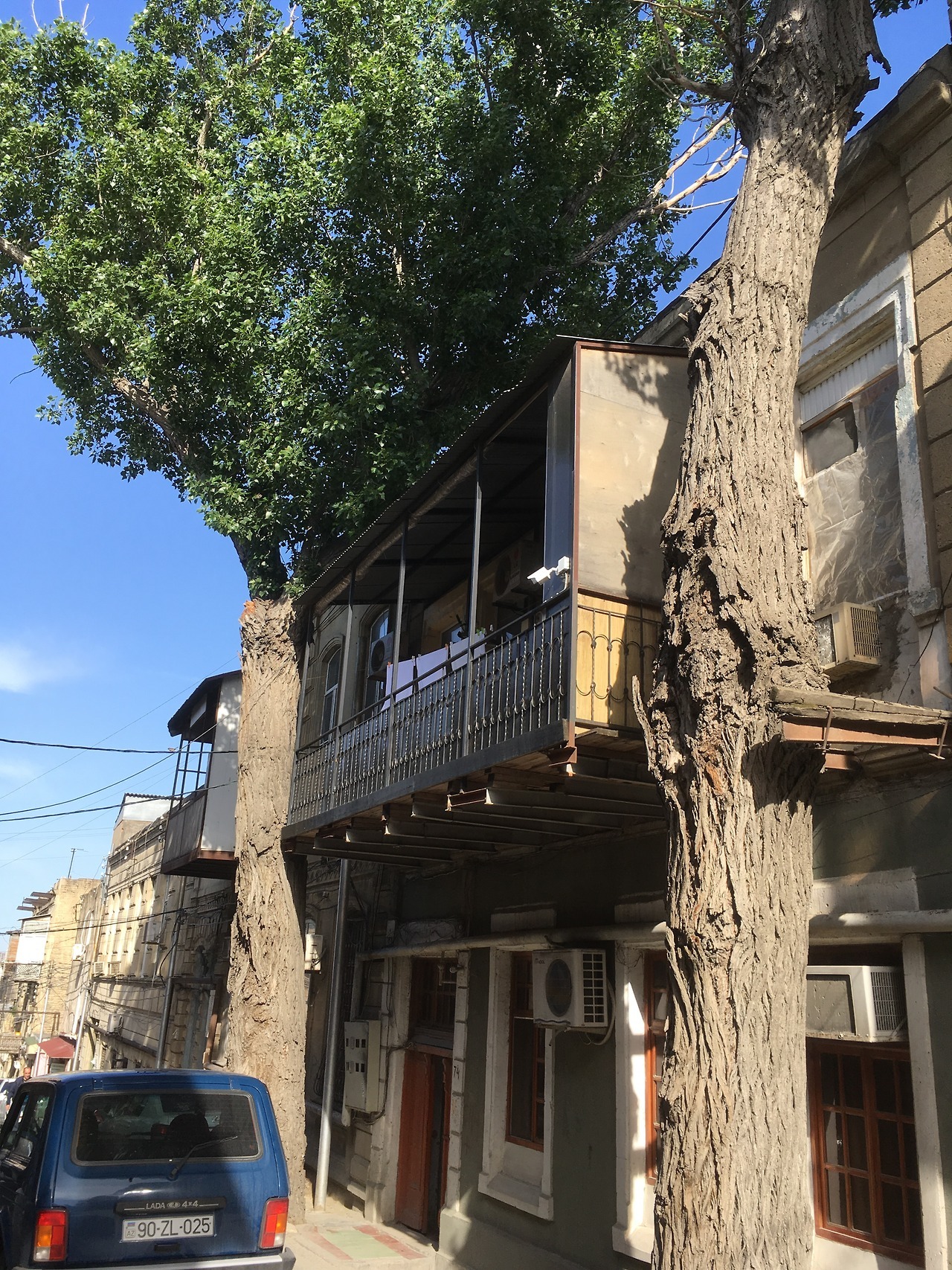
I Want To Be a Balcony
Today, Richie and I were exhausted. To get from Covenant to Azerbaijan, we had to travel for twenty-four hours: by car, bus, train, taxi, and plane. But we finally made it to Baku. Because we were exhausted we tried to move all day. Our hosts Zachary and Mrs. Williams took us on a walk through Baku in order to orient ourselves to the city and to fight the jet lag that was drowning us. We walked through downtown Baku to the apartment we would be renting for the month. Downtown was packed: It was in the eighties, and Azerbaijanis were celebrating their holiday Victory day. Students stood in line at the one McDonalds in all of the city to get their Flurries. The town squares buzzed. We walked down the street, and it seemed that a new building was popping up at every street corners. We heard Power tools humming as they prepared the Formula One racing barricades and stands for the Islamic Solidarity Games that would take place in Baku three days from now.
Although Baku is busy, it hasn’t overwhelmed me, like New York City did when I first visited. The city is booming, but the people still have a quiet about them. I walk down the street and see shop owners sit outside by their door, enjoying a smoke and a game of backgammon. After lunch, I watch lots of employees leave their office buildings to go for a stroll in the park. I went to a çayxana (teahouse) with a local named Ayaz, who said that this is one of Azerbaijan’s favorite past times. People sit for an hour or so just talking with a friend over a pot of tea. It seems like Azerbaijanis build rest into their daily routine. It might make them less efficient than Americans, but it might also make them more human than Americans. God built rest into our schedule with the Sabbath, and Azerbaijanis seem to rest well.
My favorite thing about the way they rest is that Azerbaijanis build a space for rest in just about all of their buildings—even offices. I saw this when Mrs. Williams and Zach (two of our hosts) took us to the apartment we’re renting. It has a bedroom, bathroom, kitchen, living room, and a balcony. I don’t think any building this small in America has a balcony, but Azerbaijanis make space for it. A short tin rail runs around a small about a 6 foot patio. It’s furnished with a lawn chair that looks over a rusty tin roof and a small courtyard with a tree growing out through the cement. It’s simple. And it is beautiful. I cannot wait to sit, drink çay, and write on that lawn chair. For now Richie and I are staying with our hosts, but we’ll move into our apartment in a day or two.
I also saw a space dedicated for peace in the Old City. Another expat from America who we befriended, Andrew, showed us around the Old City today. And that was where I first noticed the spaces for peace. I haven’t seen a lot of Baku, but I think that the Old City will be my favorite place. It is an island of old residential houses behind castle walls that separate the Old City from the newer buildings that have been built around it. It had cobblestone streets, flower boxes hanging under windows, and warped wooden balconies jutted out from the side of the old residential buildings. Andrew said that these rooms were important to Azerbaijanis. Not much else happens in these rooms except for board games, çay (tea), and sitting. Just sitting. To me, the Old City felt like the balcony of Baku. It was in the city, yet set apart and quiet. It took me back and slowed me down. (I didn’t need too much more slowing down because of the jet lag, but later I will)
As I was walking, I thought about how beautiful it would be to be a balcony for other people. I want to be a person that others can rest with if they need to. I want to give life to the people the people I meet, rather than drain the life out of them. I am not sure how I’m going to do this, but I think that joy coupled with patient, listening ears is a good start. I need to keep thinking about it. For now, I just have the picture and a prayer. And one day I hope to see that picture when I look in the mirror.
That balcony in the Old City where people go to sit and rest.

A Culture of Tensions
Azerbaijan is a culture of tensions: geographically, socially, and religiously. Geographically, the country is sandwiched between country’s with heavy cultural influence, and each pulls Azerbaijan’s culture toward it. The language is close to Turkish, but almost everyone in Baku also speaks Russian. And Azerbaijanis eat food from all three: kabobs from Iran, pide (like pizza) from Turkey, borsch (beet soup) from Russia. I would guess that each of these cultures influences Azerbaijan’s culture in other ways. But for now, I can see it most clearly in the food and language.
Azerbaijan is also caught in the tension between East and West. On the map, Azerbaijan is a central Asian country. However, in the past three years they have hosted Eurovision and the first European Games. The country is also kind of European. I see it especially in Azerbaijani students’ love of America.
When we attended a youth group, this romanticized view of the West became most evident. At the event, I met a guy my age. When he figured out I was America he scooted so close to me that we were thigh to thigh, and he had is arm around my shoulder. In Azerbaijan, this is not as strange as in America. Even two guy friends often walk arm in arm here. It was a still little uncomfortable though because we weren’t good friends yet. His English was very difficult to understand, but he wanted to talk for hours nonetheless. And then he wanted to hang out after the event. It was exhausting to try to understand what he was saying, but he managed to say, “America is perfect. You’re perfect. Not Azerbaijan. Take me with you please!” Then he grabbed my arm tightly.
This guy loves America more than most, but it is safe to say that he’s not alone in his love of America. However, the East also pulls Azerbaijan towards it. Azerbaijan is 98% Muslim. It is a Muslim nation. Most people in Baku are secular Muslims, but as you travel farther from the capital, people seem to be much more traditional. Women dress in Hijabs, and there are more Mosques. Azerbaijan seems to be pushing harder towards the West than the East, but many citizens (especially the older ones and the ones living out in the country) are digging their heels into the dirt.
Azerbaijan is also both a secular country and a Muslim country. Azerbaijan is 98% of the citizens of Azerbaijan consider themselves Muslim. However, it’s also a post-Soviet country that desires the attention of the West. This makes it a secular country. It contains elements of both. At the same youth group as before, we learned that the father has much more authority over the family than in America (For example Your father’s religion is yours, and your father’s job determines your social standing,) We also learned that bringing your family honor is important. Sexuality is a touchy subject because there is a lot of potential to bring shame to your family with it. Homosexuality is shameful. Divorce is shameful. And having children before marriage is shameful. These values come from Islam’s hold on the country. However, it is also secular. Some mosques in Baku even encourage Sunni and Shia Muslims to worship together. Baku is currently hosting the Islamic Solidarity games (Richie and I got to go to a soccer match between Morocco and Azerbaijan.) And the people of Baku are discussing gender equality. These are Azerbaijan’s secular Western values.
This culture is difficult to pin down, and I really don’t want to try. There are so many complexities to it that come from cultural tensions inside and outside the country. I don’t want to make it sound simpler than it is. But I can say that Azerbaijan is secular and Muslim. It is Eastern and Western. It’s a complex culture, and we are enjoying our time learning about it.
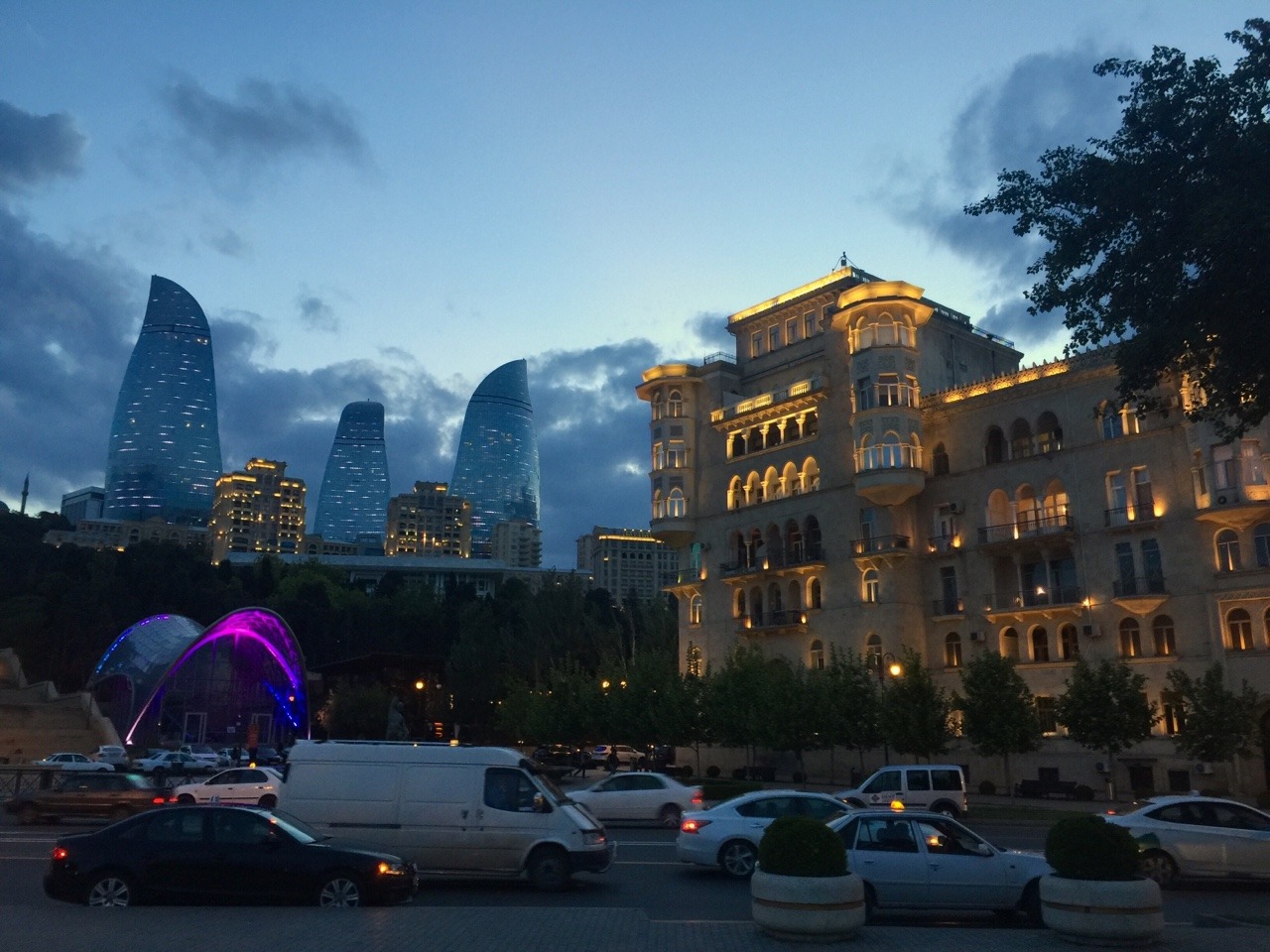
Baku is a city of contrast. Captured by this photo is the architectural tolerance of ancient buildings and the cutting edge modern skyscrapers. Baku features the Old City, a large portion sectioned off by medieval tall walls. Within the large gates, of the Old City, you’ll quickly notice the houses and apartments built close to each other, separated by cobblestone streets (with a Italian feel). Walking through, you will encounter friendly vendors selling Azeri rugs, wool hats, and çay mugs. The ancient city includes the Maiden Tower and the Old palace: round buildings open for tours. In experiencing the less travelled sections, of the town, you will feel the sacredness of the homes which people live; whose windows are always budding with vibrant flowers and whose artistic doors display the uniqueness of the people within.
Traveling towards the more industrial sections of the city of Baku you will be struck in awe by the bright lights of the skyline. The city pushes forward to modernization without technological lack. Pictured above is the three Flame Towers which reflect the blue sky in the day and lights up at night to different shining designs (such as the Azerbaijani flag). The towers are a beacon calling the country to follow along in modernity.
For now the city maintains feet in both the traditional and the new. The tolerance forms a stark contrast which I cannot help but be moved by.
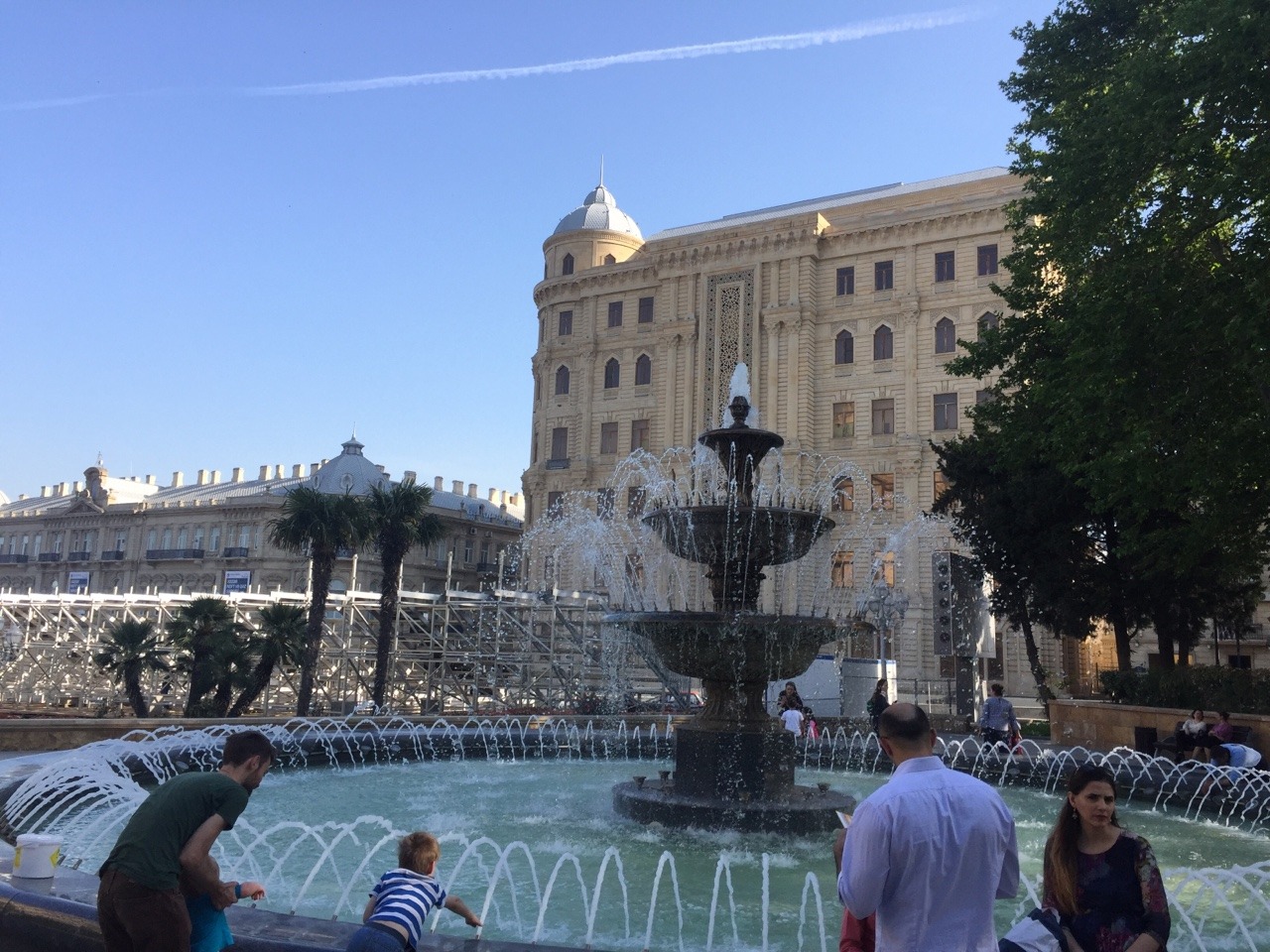
A couple days ago, James and I went to a çiyxana (tea-house) with our Azeri friend Ayaz. The shop was beautiful; as the stone walls were covered with vibrant paintings. The first thing that I noticed as I entered the room was that many customers were smoking large metal hookahs with a fruit flavored smell, a good found on the menu. As we sat down, Ayaz ordered a pot of Azeri tea for us, for about three menat. Then James and I began drilling him with our many questions.
Because Ayaz had been recently married, James asked him about the traditional process. He replied that to date, the man must sent over a delegation of ambassadors (normally his parents) to the girl’s father and mother. The delegation “talks him up”, saying that he is respectable, hard-working, etc. If the parents oblige, the couple can begin dating.
The process of engagement further emphasizes the parents role. The man invites the parents over for tea. From the invitation, the parents know that he is going to ask them for permission to marry their daughter. According to tradition, the parents pour the man a glass of tea and if the tea is sweet, the answer is yes. James asked him if the tea was sweet for him and he replied, “yes, very sweet”
Azeri weddings are split into two dinners: one for the men and one for the women. The couple goes to both of the dinners. Ayaz jokingly said that he wasn’t able to eat at the women’s because their was a line of people that wanted to take pictures with them.
The Azerbaijani tradition puts much emphasis on the role of the parent’s, showing the cultural value of their wisdom.
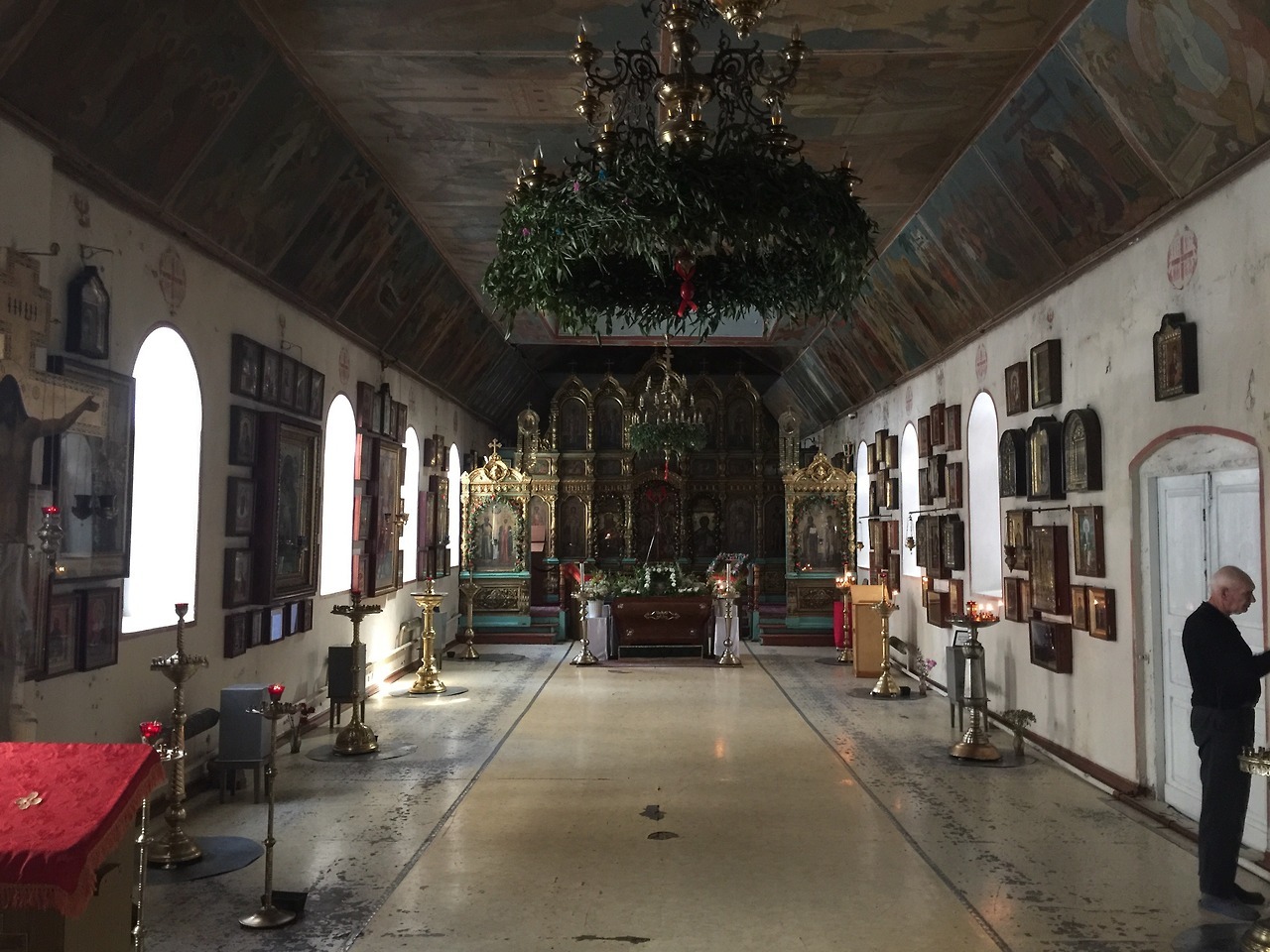
James and I were gifted the opportunity to visit a Russian Orthodox Church. As we entered the first room, there was a daily morning ceremony beginning. The room was filled with a sweet smell from incense that a young priest was waving. Our group of about fifteen crowded in the center of the dimly lit room (the only lights were candles). Behind us was a choir of two men and two women singing from a Russian liturgy. After the choir paused, two priests in front of my group took their turn. One of the priest was an older man in a robe denoting a superior rank. The other priest, with long brown hair, was a younger man in his mid-thirties. Each dressed in a bright red robe and sang their part in a deep monotonous tone.
After several minutes of call and response from the choir and the priests, the two walked behind a gate which sectioned off a portion of the room. As they turned, the younger man kissed the ring of the superior (I noticed the two kissing other important items in the room). While they continued their ceremony I studied the icons across the ceiling and walls. The ceiling was covered in two foot tiles which pictured a different scene from the Gospels. The walls pictured different saints and in the front of the room was two very large paintings: the right was Christ in Mary’s womb and to the left pictured the cross of Jesus.
Because the Eastern Church assisted greatly in the development of the Trinity. I searched the icons for traces of the three Persons. I was unsuccessful in spotting the three distinctly, although there was a painting of the Father behind the Son.
Our guide then, signaled for us to leave, and we left while the ceremony continued. We walked upstairs to see the sanctuary for congregational worship. The room (pictured above) was much more spacious, as there were no chairs because they stand for the services. There were also several windows which allowed much more light than the previous. On the sides of the room were many shrines for saints. We were told by a member that people will come and bring a candle and pray to a saint. Many of the saints had specific topics (such as health) that the people pray to them for. There was one for Mary, one for Michael the archangel, one for Bartholomew the apostle whom the Azeris believed brought the Gospel to their land, and one for Saint Nicholas (I do not remember the names of the others). In the front of the room was a spot dedicated to Jesus.
The Russian Orthodox Church successfully emphasizes the holiness of worship and the necessity to center praise on the revelation of the Incarnate Christ. The church was stunning. Yet, there was a heaviness in the tone of their liturgy and in the room which I do not think is healthy for a believer. There is much to learn from the Eastern Tradition and the Church should seek to unify on the Salvific doctrines which they share.
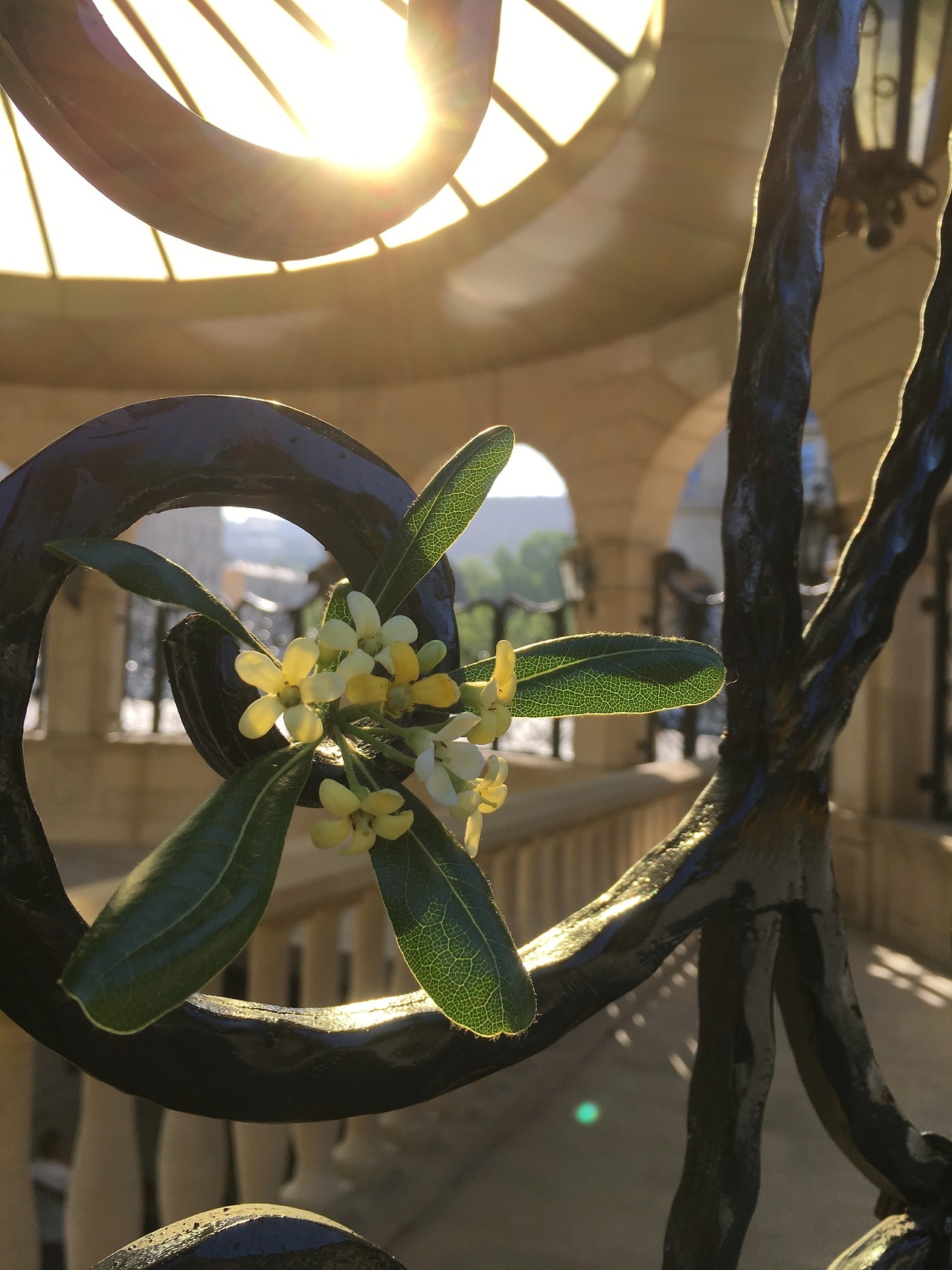
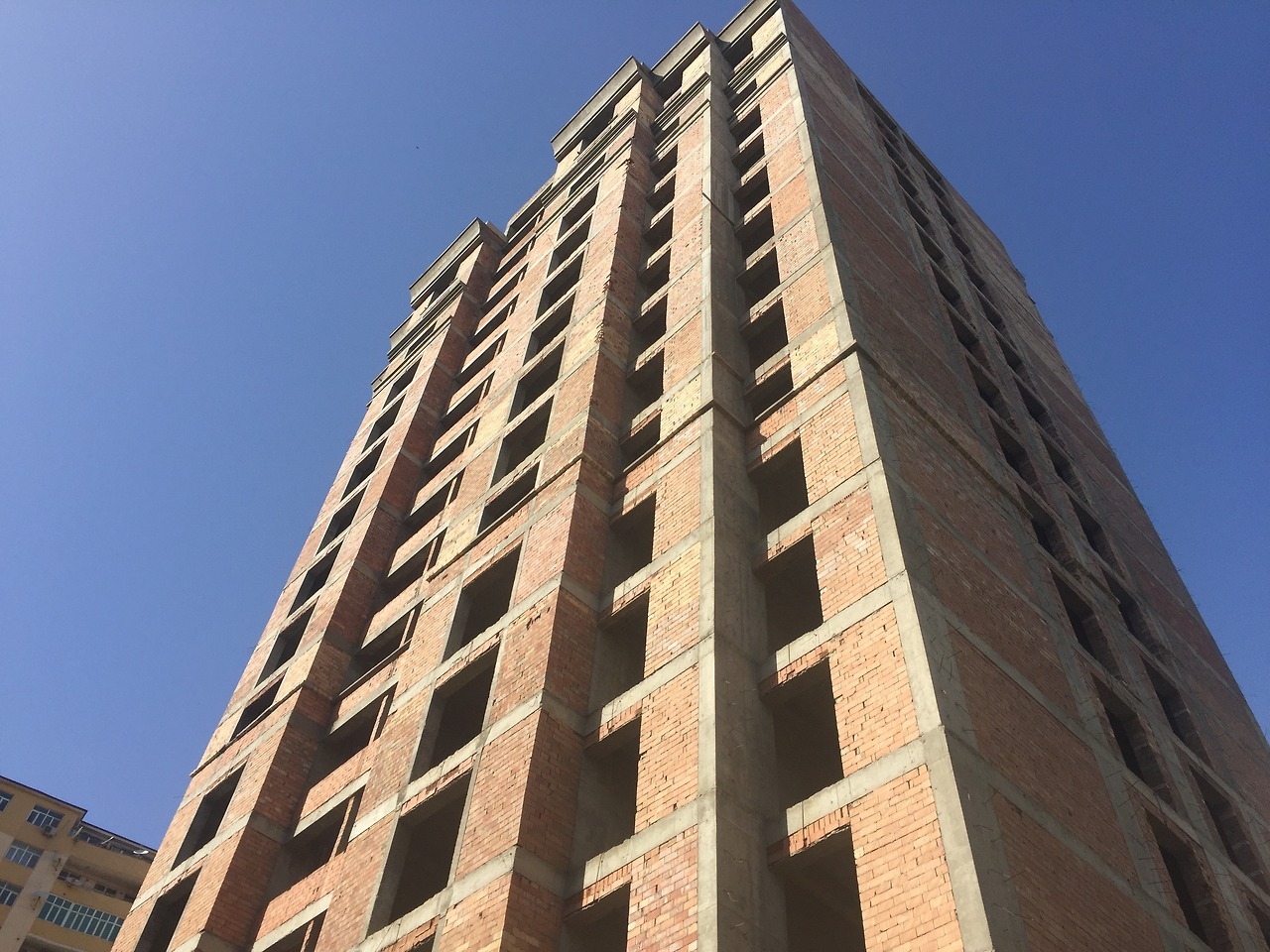
The past few days, James and I have explored the city of Baku asking as many questions as we can to the people that have lived in the country. One interesting thing that we have noticed is the beautiful modern style buildings that have been constructed in Baku. Our guide said the country was attempting to appear economically developed to the world’s influential countries such as the U.S. and Russia, for military and financial assistance. This reputation has led them to host Eurovision, the European Games, and the Islamic Solidarity games. Their hope is that these events would bring tourism who would notice the high level of prosperity.
However, James and I have been able to see other portions of the city that are not so financially extravagant. Some homes that we walked by were very poor. Somewhat frustrated, our guide pointed us to several tall apartment buildings and hotels that he said were completely empty. Our guide solemnly remarked, “I wish that this housing that is not being used could somehow be used by the poorer people who really need them.”
Pictured above is a hotel building project halted, although much of costs seemed to be already forgone.

